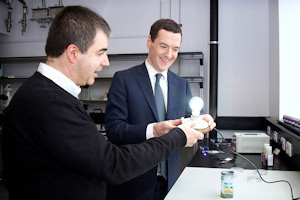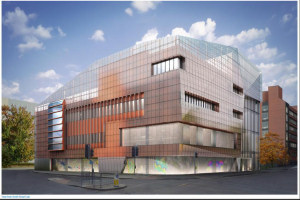First mentioned here in a March 18, 2016 posting titled: Tempest in a teapot or a sign of things to come? UK’s National Graphene Institute kerfuffle, the ‘scandal’ seems to be getting bigger, from a March 29, 2016 posting on Dexter Johnson’s Nanoclast blog on the IEEE (Institute of Electrical and Electronics Engineers) website (Note: A link has been removed),
Since that news story broke, damage control from the NGI [UK National Graphene Institute], the University of Manchester, and BGT Materials, the company identified in the Times article, has been coming fast and furious. Even this blog’s coverage of the story has gotten comments from representatives of BGT Materials and the University of Manchester.
There was perhaps no greater effort in this coordinated defense than getting Andre Geim, a University of Manchester researcher who was a co-discoverer of graphene, to weigh in. …
Despite Geim’s recent public defense, and a full-on PR campaign to turn around the perception that the UK government was investing millions into UK research only to have the fruits of that research sold off to foreign interests, there was news last week that the UK Parliament would be launching an inquiry into the “benefits and disbenefits of the way that graphene’s intellectual property and commercialisation has been managed, including through research and innovation collaborations.”
The timing for the inquiry is intriguing but there have been no public comments or hints that the NGI kerfuffle precipitated the Graphene Inquiry,
The Science and Technology Committee issues a call for written submissions for its inquiry on graphene.
Send written submissions
The inquiry explores the lessons from graphene for research and innovation in other areas, as well as the management and commercialisation of graphene’s intellectual property. Issues include:
- The research obstacles that have had to be overcome for graphene, including identifying research priorities and securing research funding, and the lessons from this for other areas of research.
- The factors that have contributed to the successful development of graphene and how these might be applied in other areas, including translating research into innovation, managing/sharing intellectual property, securing development funding, and bringing key stakeholders together.
- The benefits and disbenefits of the way that graphene’s intellectual property and commercialisation has been managed, including through research and innovation collaborations, and the lessons from this for other areas.
The deadline for submissions is midday on Monday 18 April 2016.
…
The Committee expects to take oral evidence later in April 2016.
Getting back to the NGI, BGT Materials, and University of Manchester situation, there’s a forceful comment from Daniel Cochlin (identified as a graphene communications and marketing manager at the University of Manchester in an April 2, 2015 posting on Nanoclast) in Dexter’s latest posting about the NGI. From the comments section of a March 29, 2016 posting on the Nanoclast blog,
*ETA March 31, 2016 at 1530 hours PDT: Dexter has posted response comments in answer to Cochlin’s. You can read them for youself here .* I have a couple of observations (1) The use of the word ‘libelous’ seems a bit over the top. However, it should be noted that it’s much easier to sue someone for libel in England where the University of Manchester is located than it is in most jurisdictions. In fact, there’s an industry known as ‘libel tourism’ where litigious companies and individuals shop around for a jurisdiction such as England where they can easily file suit. (2) As for BGT Materials not being mentioned in the 2015 press release for the graphene lightbulb, I cannot emphasize how unusual that is. Generally speaking, everyone and every agency that had any involvement in developing and bringing to market a new product, especially one that was the ‘first consumer graphene-based product’, is mentioned. When you consider that BGT Materials is a newish company according to its About page,
BGT Materials Limited (BGT), established in 2013, is dedicated to the development of graphene technologies that utilize this “wonder material” to enhance our lives. BGT has pioneered the mass production of large-area, high-quality graphene rapidly achieving the first milestone required for the commercialization of graphene-enhanced applications.
the situation grows more peculiar. A new company wants and needs that kind of exposure to attract investment and/or keep current stakeholders happy. One last comment about BGT Materials and its public relations, Thanasis Georgiou, VP BGT Materials, Visiting scientist at the University of Manchester (more can be found on his website’s About page), waded into the comments section of Dexter’s March 15, 2016 posting and the first about the kerfuffle. Gheorgiou starts out in a relatively friendly fashion but his followup has a sharper tone,
It’s hard to tell if Gheorgiou is trying to inform Dexter or threaten him in his comment to the March 15, 2016 posting but taken together with Daniel Cochlin’s claim of libel in his comment to the March 29, 2016 posting, it suggests an attempt at intimidation.
These are understandable responses given the stakes involved but moving to the most damaging munitions in your arsenal is usually not a good choice for your first or second response.

